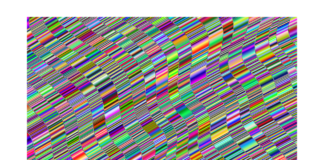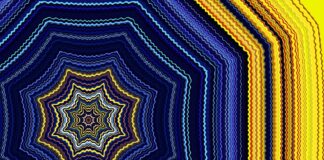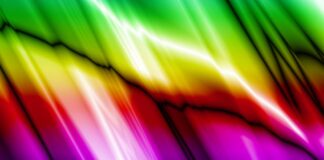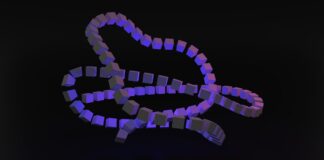Yosys is an open-source synthesis tool widely used in the field of digital design and hardware description languages (HDLs). Developed by Clifford Wolf, Yosys enables designers to synthesize, analyze, and optimize digital circuits described in languages such as Verilog and VHDL. From RTL synthesis to formal verification and technology mapping, Yosys offers a comprehensive suite of features for FPGA and ASIC design. Here’s a detailed overview covering the essential aspects of Yosys:
1. Introduction to Yosys:
Yosys, which stands for “Yosys Open SYnthesis Suite,” is a powerful synthesis tool capable of transforming high-level hardware descriptions into optimized gate-level netlists. It supports various input formats, including Verilog, VHDL, and SystemVerilog, making it versatile and adaptable to different design environments. Yosys is primarily used in digital design projects, including FPGA prototyping, ASIC development, and hardware security research.
2. Key Features of Yosys:
a. RTL Synthesis:
Yosys performs RTL synthesis, converting register-transfer level (RTL) descriptions of digital circuits into optimized netlists composed of logic gates, flip-flops, and other standard cells. It applies a series of optimization techniques to minimize area, power consumption, and propagation delay while preserving the functionality of the original design.
b. Formal Verification:
Yosys includes formal verification capabilities for checking the correctness of hardware designs against specified properties or constraints. It supports property specification languages such as SystemVerilog Assertions (SVA) and provides formal verification tools for proving or disproving design properties through formal methods.
c. Technology Mapping:
Yosys performs technology mapping, which involves mapping logical operations in the RTL design to specific cells or primitives available in the target technology library. It optimizes the mapping process to minimize resource utilization and maximize performance while adhering to timing constraints and design specifications.
d. Scripting Interface:
Yosys features a scripting interface based on the Tcl scripting language, allowing users to automate synthesis and analysis tasks, customize optimization flows, and integrate Yosys into larger design automation workflows. The scripting interface provides flexibility and extensibility, enabling users to create custom synthesis scripts tailored to their specific requirements.
e. FPGA Synthesis:
Yosys supports FPGA synthesis, generating optimized bitstreams for programming field-programmable gate arrays (FPGAs) with vendor-specific or open-source toolchains. It provides support for popular FPGA families from vendors such as Xilinx, Intel (formerly Altera), Lattice Semiconductor, and Microchip (formerly Microsemi), enabling FPGA prototyping and implementation of digital designs.
f. ASIC Synthesis:
In addition to FPGA synthesis, Yosys offers ASIC synthesis capabilities for designing application-specific integrated circuits (ASICs). It generates gate-level netlists suitable for ASIC fabrication, optimizing the design for area, power, and performance constraints specified by the target technology node and design objectives.
g. Verilog Simulation:
Yosys supports Verilog simulation, allowing users to simulate synthesized designs and verify their functionality before hardware implementation. It integrates with popular Verilog simulators such as Icarus Verilog (iverilog) and ModelSim, enabling comprehensive design verification and debugging.
h. Open-Source License:
Yosys is distributed under the permissive ISC (Internet Systems Consortium) license, which allows users to freely use, modify, and distribute the software without restrictive licensing fees or royalties. The open-source nature of Yosys encourages collaboration, community contributions, and continuous improvement through feedback and peer review.
3. Yosys Workflow:
a. Design Entry:
The Yosys workflow begins with the entry of a hardware design description written in a supported HDL, such as Verilog or VHDL. Designers write RTL code describing the functionality and behavior of the digital circuit they intend to synthesize.
b. Synthesis:
Once the RTL code is written, designers use Yosys to perform synthesis, transforming the RTL description into a gate-level netlist composed of logical primitives and flip-flops. Yosys applies optimization techniques to improve the quality of the synthesized design in terms of area, power, and performance.
c. Optimization:
During synthesis, Yosys applies various optimization algorithms to reduce the area, power consumption, and critical path delay of the synthesized design. Optimization techniques include logic restructuring, technology mapping, constant propagation, and resource sharing.
d. Verification:
After synthesis and optimization, designers use Yosys for design verification to ensure the correctness and functionality of the synthesized design. Formal verification tools in Yosys help check the design against specified properties or constraints, ensuring that it behaves as intended under all operating conditions.
e. Implementation:
Once the design is verified, designers proceed to the implementation stage, where they generate the final output files required for hardware implementation. For FPGA designs, Yosys generates bitstreams compatible with FPGA programming tools, while for ASIC designs, it produces gate-level netlists suitable for fabrication.
f. Simulation and Testing:
Before hardware deployment, designers typically simulate the synthesized design using Verilog simulators to verify its functionality and performance. Simulation enables thorough testing of the design under different scenarios and input conditions, identifying and resolving any potential issues or bugs prior to hardware realization.
4. Yosys Extensions and Plugins:
a. SymbiYosys:
SymbiYosys is an extension of Yosys that integrates formal verification tools, including SAT solvers and formal property checkers, into the Yosys synthesis flow. It enables comprehensive formal verification of hardware designs, facilitating the detection and elimination of design errors and corner-case bugs.
b. Nextpnr:
Nextpnr is a community-driven project that provides a next-generation place-and-route tool for FPGA designs, compatible with Yosys-generated netlists. It replaces vendor-specific place-and-route tools with an open-source alternative, offering improved performance, scalability, and compatibility across different FPGA architectures.
5. Yosys Ecosystem and Community:
a. GitHub Repository:
Yosys is hosted on GitHub, where users can access the latest source code, documentation, issue tracker, and community forums. The GitHub repository serves as a central hub for collaboration, development, and support within the Yosys community.
b. User Forums and Mailing Lists:
The Yosys community maintains user forums, mailing lists, and online discussion platforms where users can seek help, share knowledge, and engage with other members of the community. These forums provide valuable resources for troubleshooting, learning best practices, and staying updated on the latest developments in Yosys and related projects.
6. Applications of Yosys:
a. FPGA Prototyping:
Yosys is commonly used for FPGA prototyping, allowing designers to synthesize and implement digital designs on FPGA devices for rapid prototyping and development. FPGA prototyping enables quick iteration, testing, and validation of hardware designs before finalizing them for ASIC fabrication or production.
b. ASIC Design:
In addition to FPGA prototyping, Yosys is utilized in ASIC design projects for synthesizing, optimizing, and verifying custom integrated circuits tailored to specific application requirements. ASIC design with Yosys involves the synthesis of gate-level netlists optimized for area, power, and performance constraints.
7. Limitations and Challenges:
a. Complex Designs:
Yosys may face challenges when synthesizing and optimizing complex digital designs with intricate timing constraints, high levels of hierarchy, or advanced features not fully supported by the tool. Designers may need to employ manual optimizations or workaround techniques to address limitations and achieve desired results.
b. Learning Curve:
For users new to Yosys and digital design automation tools, there may be a learning curve associated with understanding the tool’s features, commands, and workflows. Comprehensive documentation, tutorials, and community support resources are available to help users overcome the learning curve and become proficient with Yosys.
8. Future Developments and Trends:
a. Performance Optimization:
Future developments in Yosys are likely to focus on further improving synthesis and optimization algorithms to enhance the performance, efficiency, and scalability of the tool. Optimization techniques targeting specific FPGA architectures, ASIC technologies, and design objectives will enable designers to achieve higher-quality results in less time.
b. Integration with Emerging Technologies:
Yosys may evolve to support emerging technologies and design paradigms, including machine learning-based optimization, approximate computing, and quantum computing. Integration with emerging technologies will expand the capabilities of Yosys and enable designers to explore novel design methodologies and applications.
9. Yosys Development and Community:
a. Open-Source Collaboration:
Yosys development is driven by a vibrant community of contributors, including individuals, academic institutions, and industry organizations. The open-source nature of Yosys encourages collaborative development, peer review, and knowledge sharing, resulting in continuous improvements, bug fixes, and feature enhancements.
b. Continuous Integration and Testing:
The Yosys development process includes continuous integration (CI) and automated testing to ensure the reliability, stability, and quality of the software. Developers utilize CI pipelines to build, test, and validate changes across different platforms, operating systems, and hardware architectures, minimizing regression issues and ensuring compatibility with diverse environments.
10. Yosys Use Cases and Adoption:
a. Academic Research:
Yosys is widely used in academic research projects and educational settings for teaching digital design concepts, conducting experiments, and exploring new methodologies. Its open-source nature, extensive documentation, and scripting interface make it accessible to students, researchers, and educators interested in hardware design and synthesis.
b. Industry Applications:
In industry, Yosys finds applications in a variety of domains, including aerospace, automotive, telecommunications, consumer electronics, and semiconductor manufacturing. Design teams leverage Yosys for synthesizing, optimizing, and verifying digital designs across different stages of the product development lifecycle, from initial prototyping to production deployment.
Conclusion:
Yosys is a versatile and powerful synthesis tool widely used in digital design projects ranging from FPGA prototyping to ASIC development. With its comprehensive feature set, scripting interface, and open-source nature, Yosys provides designers with the flexibility, automation, and scalability needed to tackle complex hardware design challenges. As the field of digital design continues to evolve, Yosys remains at the forefront, driving innovation, collaboration, and advancements in hardware synthesis and verification.














